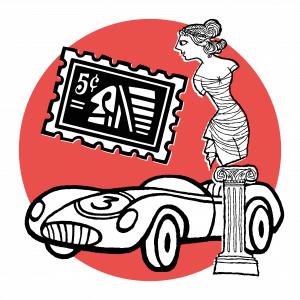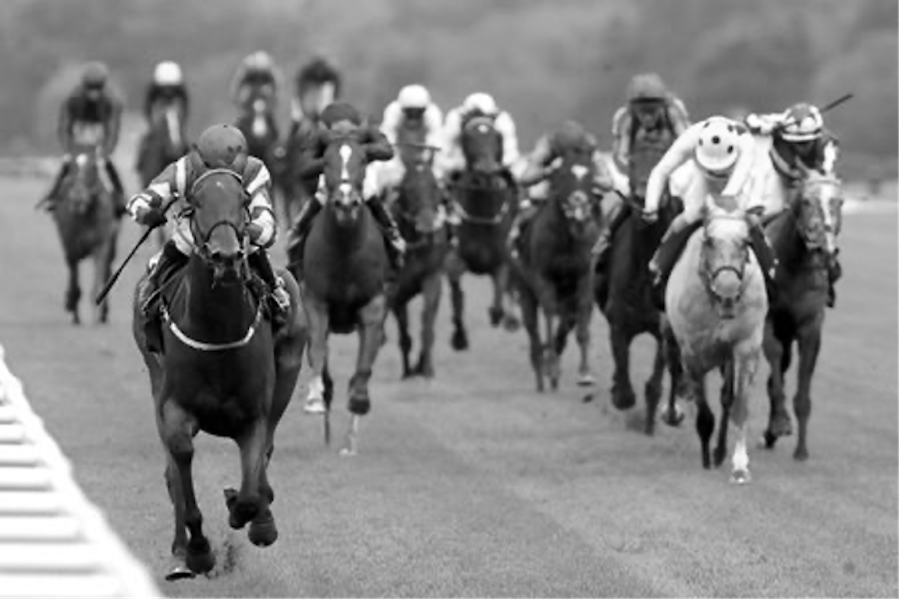Continuing our series on horse race syndicates, how sometimes tearing up the best-laid plans can lead to the greatest of luck.
The previous four articles on getting an edge in the world of horse race syndication concluded with suggestions on how to structure and manage a syndicate. The fruits of this approach were borne out on 17 October 2020 at Ascot, where one of the syndicate’s horses, Trueshan, demolished a top-class field of stayers in spectacular style. In so doing he established himself as one of the favourites for the Ascot 2021 Gold Cup.
May is a favourite time of the racing year – after the Grand National and before the new flat season takes off. It’s when the ‘breeze-up’ sales take place in Newmarket. Breeze-ups are so named because two-year-olds (think young teenager, in human terms) advertise their worth by ‘breezing up’ (galloping) three furlongs of the Newmarket Old Rowley course. In addition to a close perusal of bloodlines, it offers prospective buyers an insight into the horses’ racing potential.
Agents, trainers and buyers study these breeze-ups in detail – what time do the horses put up, how relaxed and balanced are they at full stretch, how strongly are they finishing, do they give any sign of being unsound in either wind or limb? As an enthusiastic amateur committed to finding horses who will stay and are athletic, study of the pedigrees and the breezes are a means of identifying a shortlist of horses to further view in the Tattersall barns immediately prior to the sales. This shortlist is normally rendered wastepaper when findings are discussed with Anthony Bromley, our bloodstock agent. It’s hugely time-consuming, fun to pore over and creates a veneer, if only for oneself, of seeking to invest syndicates’ money wisely.
So it was in May 2017 at the Craven breeze-ups, the usual sale for the bluest of blue-blooded stock. These sales are generally outside the Barbury Lions’ budget (around £50,000 per horse) so mainly I attend to get a view on the Guineas breeze-ups which take place some three weeks later. This year, however, the eye was drawn to a colt by Planteur, a relatively unsung young sire. The colt had breezed more like a steeplechaser than a potential flat-racing horse. Handsome is as handsome does, they say. When Anthony and I went to view the colt he was undoubtedly handsome – even if he looked more of a National Hunt three-year-old than his svelte contemporaries.
Every yard he went, the daylight between him and his pursuers grew and the noise in the empty grandstand from his lucky owners swelled
His consignor explained he had too many horses for the Guineas breeze-ups so he had reluctantly brought this colt to the Craven sales. As the very last lot he attracted little attention and was knocked down to us for the bargain basement price of 20,000 guineas.
The horse scarcely reflected a typical Barbury Lions profile (middle-distance flat horse with the athletic potential to jump a hurdle) so he was syndicated to the Top Brass chasing partnership. We named him Nebuchadnezzar (Salmanazar and Methusalar are other horses in the syndicate, which may give a clue as to the partnership’s alternate interests). Belying appearances, he showed sufficient on trainer Alan King’s gallops to run three times as a two-year-old – each time with distinct promise and showing a great attitude. Attitude more than anything else is what you pray you are purchasing, and normally the only vague clue is the performance of other siblings.
So when we went back to the Guineas sales in 2018, one of the attractions was the offspring of Planteur. This led to the purchase in 2018 of the only two colts of his in the sale, Hummdinger and Trueshan, again at modest sums. The former, speedier than his half- brothers and potentially a typical Barbury Lion, palpably failed to live up to his name – beware of naming a horse with a title that suggests huge ability – and was quickly sold on. Trueshan, however, looked to have scope and was initially aimed at following the same route as Nebuchadnezzar. The Barbury Lions route was eschewed – so much for logical planning and for following a tried and tested formula!
Toward the end of his two-year-old career, Trueshan was showing enough for Alan to make his debut on the flat. He ran once promisingly at Nottingham and was subsequently gelded and put away with the intention of leasing him to become the three-year-old in the Barbury Lions 5 2018-19 syndicate. He became a Barbury Lion much more by luck than any good judgment!
From the outset of his three-year-old career, Trueshan showed potential. He won his first race on the dirt at Wolverhampton and followed up with a relatively easy success at Ffos Las. His next race at Haydock was a disappointment where he got involved on the wrong side of the course. But he then came out and trounced a good-quality field of handicappers in the 12-furlong Old Rowley Cup at Newmarket. Finally he finished the season by fighting back on very soft ground to win a 13-furlong race at Newbury against a top-class horse, Hamish. Dreams were beginning to form!
At four years old his principal target was the Ebor – the richest handicap of the season – run at York in August. On the day, everything seemed to be going his way when the heavens opened and the going turned soft. Sent off second favourite, he was held up in a muddling paced race and never found space into which to run. It was like Seb Coe in his 800 metres defeat at the Moscow Olympics!
Following a confidence-building win at Salisbury, he was aimed at the Long Distance Cup at Ascot on Champions Day. Faced with running for the first time over two miles and against that doyen of long distance races, Stradivarius, he traded at 18/1 on the morning of the race – a price that contracted to 11/1 before the off as the syndicate, who had always felt he would be shown in his best light when he stepped up in trip, got stuck in.
The last three furlongs will forever be etched in the memory as his jockey, Hollie Doyle, swung him out to challenge and allowed him to make full use of his powerful stride. Every yard he went, the daylight between him and his pursuers grew and the noise in the empty grandstand from his lucky owners swelled accordingly. It was beyond our wildest dreams. Danny Horsford, Alan’s assistant who has played such a huge part in his development, admitted the thought occurred he might have forgotten to add the weight cloth. Again it was like Seb Coe – but this time in his Olympic 1500 metres mode!
So now the dream is a reality. Visions of competing in such races as the Ascot Gold Cup and the Melbourne Cup are real prospects. And this with a horse that broke all the Barbury Lions criteria and was purchased more with a view of Cheltenham and Aintree glory than competing in Cup Races on the flat! We set out to get an edge in horseracing through logic and good planning, but Trueshan goes to show that often good luck is the ultimate determinant.








